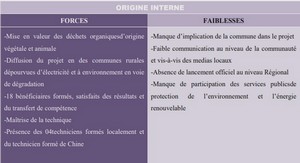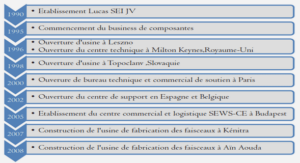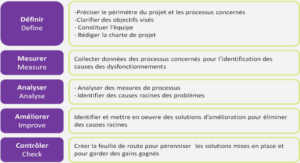La variation séculaire en Amérique Centrale durant la période Maya Classique
Introduction
Records of the ancient geomagnetic field intensity over geological time (paleointensity) and pre-historical and historical time (archeointensity) are unique observations of the temporal evolution of the energy involve in the dynamo processes occurring in the Earth’s liquid outer core. Archeomagnetic measurements represent a significant part of the data over the last ten millennia, before the historical records from sailors and the beginning of the continuous direct data acquisition in magnetic observatories and from satellites. Indeed, archeological artifacts made from baked clays such as pottery, kilns, bricks or any other burnt clay structures, supply reliable measurements as they usually carry a strong and stable thermo-remanent magnetization (TRM) acquired during their last firing. Archeomagnetic studies of such pre-historical and historical remains could provide a long and accurate record over the last ten millennia of the geomagnetic field and its secular variation (e.g. compilations of Genevey et al. (2008) and Donadini et al. (2009)). Global geomagnetic models have been built to millennial time scales using such data compilations. The reference global models CALSxk (Continuous model of Archeomagnetic and Lake Sediment data over the x last millennia) and ARCH3k (relying on a selective compilation of only archeomagnetic data), are defined over a time interval from 3 to 10 kyrs (Korte and Constable, 2005, 2011; Donadini et al., 2010; Korte et al., 2011). These models represent a double interest (Gallet et al., 2009). The first concerns the geophysical research. They allow an examination of several questions as varied as the role of the geomagnetic field on the cosmogenic isotopes production rate (Lifton et al., 2008) or the possible transfer of energy from the geomagnetic dipole to the non-dipole terms (Camps and Prévot, 1996). The second concerns the archeology. Well-established data sets from different regions of the world are necessary to develop dating methods by comparing the geomagnetic field elements (intensity and/or direction) as recorded by an archeological artifact against a master curve of the secular variation of the geomagnetic field (e.g. Lanos et al. (2005); Gallet et al. (2009)). The precision of archeomagnetic datings depends directly on the accuracy of the calibration curves. However, a common deficiency in all of these models is a large spatial bias arising from the fact that most of the data comes from the northern hemisphere, essentially from Europe, linked to a lack of reliable intensity and directional data from the southern hemisphere. Indeed, numerous regional studies have provided high quality archeomagnetic data in several parts of Europe (e.g. compilations of Gallet et al. (2002); Kovacheva et al. (2009); Tema et al. (2010); Tema and Kondopoulou (2011)), because the cultural heritage is very important and numerous investigations have been carried out. These compilations have been used to build regional master curves that allow a precise dating of various archeological artifacts (Kovacheva et al., 2004; Gallet et al., 2009; Aidona and Kondopoulou, 2012). Surprisingly enough, the secular variation curve of the geomagnetic field in Mesoamerica is rather poorly defined despite of the important amount of archeological sites and the impressive cultural heritage. Data are sparse and are of uneven quality. As a consequence, archeomagnetic dating in Mesoamerica is still a hard task to manage (López-Téllez et al., 2008). Indeed, after the pioneering studies of Nagata et al. (1965) and Bucha et al. (1970), very few studies were performed until recently on archeological artifacts (Ceja et al., 2009; Morales et al., 2009; Alva-Valdivia et al., 2010; Pineda-Durán et al., 2010, 2011) and on historical lava flows (Gonzalez et al., 1997; Morales et al., 2001; Conte-Fasano et al., 2006). The present study is part of this recent effort. We carried out an archeointensity study over 24 incense burners excavated in the Maya city of Palenque (Mexico). Our sampling covers a large part of the Classic period (400-820 A.D.). In the first part of this paper, we describe the archeological context and the samples. Then, we analyze the magnetic mineralogy and the firing conditions of the incense burners during their manufacture. Next, the archeointensty experiments and results are presented. Finally, we discuss the reliability of these results, and a comparison with an appropriate data selection in the Mesoamerican region and global models is attempted.
Archeological context and ceramic ages
The ceramics studied in this paper are pieces of incense burners excavated at the archeological site of Palenque, Chiapas, Mexico, (Fig. ??), one of the most important Classic Maya cities. Incense burners were one of the main components of the religious ceremonials in Mesoamerica and were composed of two parts : a hollow clay pedestal surmounted by a brazier. Rice (1999) distinguished two groups of censers, with effigy and without effigy. The effigy censers are characterized by the representation of divinities on the pedestal (Fig. 2.18).The discovery of about one hundred effigy incense burners in the group of Temples of the Cross in Palenque is an unprecedented event on the Mayan area. Most of them were found buried in the basement of the main temples : the Temple of the Cross, the Temple of the Foliated Cross, and the Temple of the Sun. The other part of censers were found in the architectural complex composed of the temples XIV and XV and Group XVI. Buried censers have been partly altered because of the absence of container and many pieces were broken. Incense burners were used to worship the gods who were represented on the pedestal by burning vegetable resins and probably human blood deposited in the braziers placed above. Through analysis of the archeological context, one could understand that burying the incense burners representing the gods of the Triad (GI, GII, GIII) in the temples was a ritual practice of periodic renovation. This interpretation results from an ethnographic analogy relying on the study of ritual systems in Palenque and new sight-reading inscriptions (Cuevas-García, 2007). Incense burners show important symbolic properties as the fact of considering the « incense-gods » as living beings having a life cycle. Through their death and resurrection, the regeneration of the world became favorable. Iconographic, morphological and stylistic analyses, depending on their provenance and manufacturing technology, helped to understand their evolution during the Classic period (200-820 A.D.). During this period, the incense burners were produced continuously and changes in style can be established by means of criteria of evolution, the simplest artifacts attached to the earlier period and the more evolved attached to the most recent period (Cuevas-García, 2007). The most obvious principle is the height of the pedestals and as a consequence, the increase of the number of iconographic patterns (Fig. 2.18). Applying such criteria, Cuevas-García (2007) has established a classification of the censers of Palenque (Fig. 2.16). The Classic period in Palenque is usually divided in 5 or 6 phases. The early Classic is divided into two complexes, Picota (200-350 A.D.) and Motiepa (350-500 A.D). A Middle Classic Cascadas (500-580 A.D.) complex was later added as a subcomplex, but is still debated (Rands, 2007). The Late Classic is composed of three complexes : Otulum (580-680 A.D.), Murcielagos (680-750 A.D.) and Balunté (750-800 A.D.). The main characteristics for each ceramic phases are the following : 1. Motiepa (350-500 A.D.) : The incense burners share an identical manufacturing technique on the basis of a paste of calcite temper and dark color on the inside and brown outside. The size of objects is about 51 cm. In the iconographic motifs the deity known as GI is always represented, accompanied at the top of the head of a lizard. 2. Cascadas (500-580 A.D.) : The incense burners from this phase are more numerous and are more heterogeneous than those of the previous group, especially with the use of different kind of pastes. They present a greater height, of at least 61 cm and reaching 78 cm. Some modifications in the manufacturing technique are noticed, as the use of different pastes than the incense burners of the Motiepa phase. The god GI is still represented on the pedestal and the GIII deity is introduced. Another distinctive feature arises from the representation of the cheekbones highlighted in the faces of the deities. 3. Otulum (580-680 A.D.) : This set of incense burners is quite homogeneous and show little variability. It appears that there was a hiatus in the manufacturing techniques between Cascadas and Otulum ceramics. The same manufacturing technique was used, but an important increase of the height of the pieces to an average of 81 cm is observed. The GI and GIII are still represented but two variants are introduced, localized only in the Temple of the Cross, while in the Foliated Cross the same variant of the GIII initiated in Cascadas was kept. 4. Murcielagos (A.D. 680-750) : It is a heterogeneous group of incense burners. The manufacturing technique is different of the one used in the previous phases and allows a greater volume of the masks and an higher shape, up to more than 94 cm high. Moreover, different kind of pastes were used and one of them is very crumbly. 5. Balunté (A.D. 750-820) : All censers from this phase share the same manufacturing technique and stylistic similarities, with the representation of the same deities, including variations relative to each temple. These incense burners are the larger pieces and reach 1.14 m in height. The samples used for the archeointensity study are small non-oriented pieces that have not been reassembled taken from 24 different censers excavated in the Temple of the Cross (13 pieces), Temple of the Cross Foliated (7 pieces), Temple of the Sun (3 pieces) and Group XVI (1 piece). Each piece have been replaced in a ceramic phase (Cuevas-García, 2007), with the archeological arguments described above (Fig. 2.16). For each of them, six small samples (about 5x5x5 mm) were removed and packed in salt pellets in order to treat them as standard paleomagnetic samples and to proceed to archeointensity experiments.
Magnetic properties of samples
A good knowledge of the nature, the size and the thermal stability of the thermoremanence carriers present in the samples is essential prior to any attempt to estimate the archeointensity.
Thermomagnetic curves
Low-field susceptibility versus temperature experiments (K-T curves) allow to determine the Curie temperature and the stability of the magnetic carriers upon heatings. Thermomagnetic curves have been performed for at least one piece from each incense burner at the University of Montpellier. First, a piece of archeological material was crushed in an agate mortar and sieved to collect the 0.4-0.8 mm size fraction. Then, K-T curves were acquired at low-temperature by means of a cryostat apparatus (CS-L) and at high-temperature under Argon using a furnace (CS-3) coupled to the KLY-3 Kappabridge instrument (Agico, Czech Republic). The studied material was first heated from liquid nitrogen temperature (78 K) to about 650◦C and cooled down to room temperature. Finally the low temperature measurements were repeated from 78 K up to room temperature in order to see if any change occurred. The data were corrected for the empty holder and normalized to the maximum susceptibility. Some samples were treated with several heating-cooling cycles in which the maximum temperature is progressively increased. This procedure allows to estimate the maximum temperature at which the samples can be heated without changing their magnetic properties. Distinct behaviors where identified (Fig. 2.20 a, b, and c). In spite of different shapes, most of the curves are nearly reversible suggesting few mineralogical changes during heating at least up to 400◦C (Fig. 2.20, d). Curie temperatures were calculated using the method of second derivative and vary between 500 and 580◦C. This indicates that magnetite or Ti-poor titanomagnetite are the main magnetic carriers. On the contrary, K-T curves from few samples, for example TC Pasta 5 (Fig. 2.20), are not reversible and indicate that these samples are not stable against heating at high temperature.





